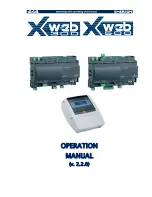
Many errors are first indicated by a lit system-error LED on the control-panel assembly of the server. If this
LED is lit, one or more LEDs elsewhere in the server might also be lit and can direct you to the source
of the error.
Before you work inside the server to view the LEDs, read the “Safety” on page v and “Handling
static-sensitive devices” on page 76.
If an error occurs, view the server LEDs in the following order:
1. Check the control-panel assembly on the front of the server. If the system-error LED is lit, it indicates
that an error has occurred.
2. Check the front and rear of the server to determine whether any component LEDs are lit.
3. g8
4. Look at the system service label inside the cover of the server, which gives an overview of internal
components. This information can often provide enough information to correct the error.
System event logs
Error codes and messages are displayed in POST event log, system-event log, TMM event log, and
Diagnostic event log.
•
System-event log:
This log contains POST and system management interrupt (SMI) events and all events
that are generated by the baseboard management controller that is embedded in the TMM. You can view
the contents of the system-event log through the Setup utility and through the Diagnostic program (as
IPMI event log).The system-event log is limited in size. When it is full, new entries will not overwrite
existing entries; therefore, you must periodically clear the system-event log through the Setup utility.
When you are troubleshooting an error, you might have to save and then clear the system-event log to
make the most recent events available for analysis.
Messages are listed on the left side of the screen, and details about the selected message are displayed
on the right side of the screen. To move from one entry to the next, use the Up Arrow (
↑
) and Down
Arrow (
↓
) keys.
Some TMM sensors cause assertion events to be logged when their setpoints are reached. When a
setpoint condition no longer exists, a corresponding deassertion event is logged. However, not all events
are assertion-type events.
Note:
After powering the system on for the first time or after unexpected power cut, system-event log
timestamp might be inaccurate for a short period of time, but will be calibrated with real time clock or
external NTP server shortly afterwards.
•
TMM event log:
This log contains a filtered subset of all TMM, POST, and system management interrupt
(SMI) events. You can view the TMM event log through the TMM web interface. For more information,
see “Logging on to the web interface” on page 40. You can also view the TMM event log through the
Diagnostic program (as the ASM event log).
•
Diagnostic event log:
This log is generated by the Diagnostic program, and it is a chronologically ordered
merge of the system-event log (as the IPMI event log), the RAID event log, the TMM event log, and the
operating-system event logs. You can view the Diagnostic event log through the Diagnostic program
(see “Viewing event logs without restarting the server” on page 48).
Viewing event logs through the Setup utility
Use this information to view the event logs through the Setup utility.
To view the POST event log or system-event log, complete the following steps:
Step 1.
Turn on the server.
47
















































